History (1946-1970)
- History of Yonex
- History of products and athletes
1946
-
Minoru's father passed away in the war and left Minoru a single woodworking motor which he had received from his mother. Minoru began producing wooden corks for sake bottles and wooden fishing floats. Salmon fishing was extremely popular and business grew.
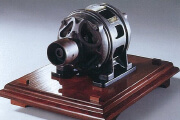
1953
-
With fishing nets changing from wood to nylon and floats switching from wood to plastic, Minoru's business started to come under threat. He believed his business was becoming outdated and was falling behind technology, and so he needed to launch something new. He travelled throughout Japan to look for new ideas and alternative ways of doing things. Coming from a small, remote provincial town, he wanted to bring his experiences and fine woodwork skills to the larger city, and began looking for any business opportunities that showed potential.
1957
-
Minoru focused on an imported sport that was growing fast post-war -- badminton. Growing up in a cold country town, he also wanted to focus on a sport that was something people could play indoors. Making daily visits to Japanese racquet producer Sanbata, he negotiated a deal to be the company's official equipment manufacturer (OEM) and so became Sanbata's subcontractor. The first steps into the badminton market.
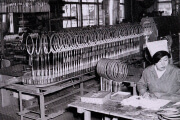
1958
-
Minoru's racquets were widely praised for their quality and the Yoneyama Company Ltd. had begun moving up to mid-class products as the world started to learn about Yoneyama products.
1961
-
Despite raising capital funds with the aim of setting up an automated factory, parent company Sanbata goes bankrupt. Faced with the devastating prospect of another bankruptcy, Minoru decided to enter the market independently as the Yoneyama brand. After direct talks and hard negotiations Minoru gained clients and was able to launch the Yoneyama brand.
-
Tokyo Sales Office is established.
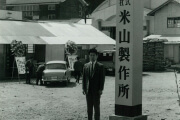
-
Company headquarters'(Current: Niigata Factory)first factory is established in Niigata prefecture, Nagaoka City.
1962
-
Known as the very first true badminton racquets, the No.1000 and No. 2000 models go on sale. In one of the major Japanese college leagues, Chuo University seize their first victory using the new No. 2000. The University's team would come to be known as "The Brown Whirlwind" because of the racquet's color and the No.2000 would mark the arrival of a new era in badminton.
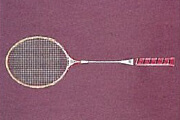
1963
-
To boost exports, Minoru starts a new company that is dedicated to trading overseas.
-
Despite the destruction of the factory in the fire, it took just three days to rebuild it. Within a week the factory was again shipping out new products. This was a PR success - the company gained immense trust and goodwill from customers and rapidly became the No. 1 company in Japan for badminton.

-
Yoneyama Company, Ltd. continued to make good progress and increasing sales led to them becoming the No. 1 brand in Japan. However, cheap foreign racquets began to make their way onto store shelves and compete.
-
Silver Gray - the No. 2 badminton racquet maker in the world at the time - sign Yoneyama Company, Ltd. as their exclusive distributor.
1965
-
The company decided to develop their own competition racquets and the overseas market was primed for expansion. Minoru noticed that compared to traditional Japanese racquets made of wood, foreign racquets had frames and shafts made from steel - Minoru demanded a change. After returning home he set about developing his own racquets that would match the performance of an English racquet.
1966
-
Masao Akiyama - a current employee at the time - becomes the men's singles runner-up at the All England Badminton Championships.
1967
-
To identify itself as a sports company, the company changed its name.
-
First distributor is set up in Singapore.
1968
-
The company boosted shuttlecock production.
-
Taking a cue from a gas tap design, the company started to develop the T-joint which joins frame and shaft. Complete with new T-joint, the company created Japan's first aluminium badminton racquet.
-
The company releases Japan's very first metal racquet - the B-7000 Alumina Ace that is fitted with the world’s first T-joint.
1969
-
Company takes its first steps into the tennis industry with the first aluminium tennis racquet going on sale.
-
First aluminium tennis racquet - T-7000 - goes on sale and receives superb reviews in Italy, France and Germany.
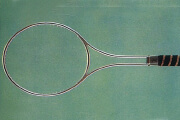
1970
-
To prevent racquet breakages in models like the T-7000, the OPS shaft system is developed. Just three months after broken racquet reports, the company released the new and improved product.
-
OPS shaft-equipped tennis racquet T-7500 goes on sale.
-
Company employee Etsuko Toganoh (Née Takenaka) wins the All England Open Badminton Championships for the first time then goes on to win in the doubles title there four times.
-
The corporate badminton team gets its first win at the Japanese Corporate Team championships.
